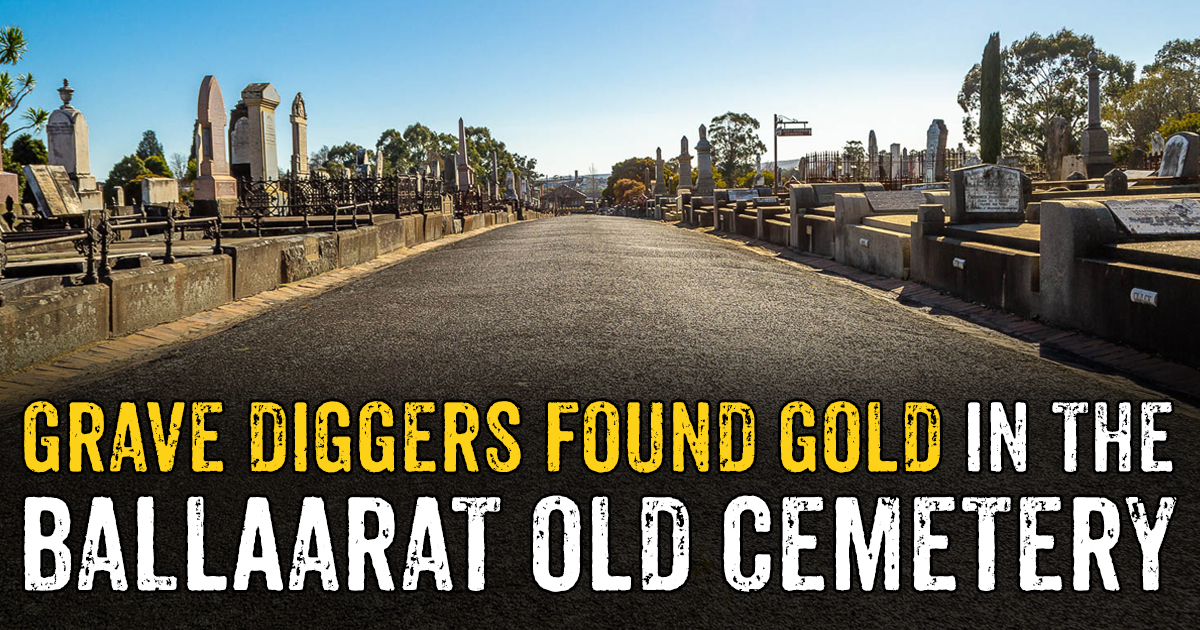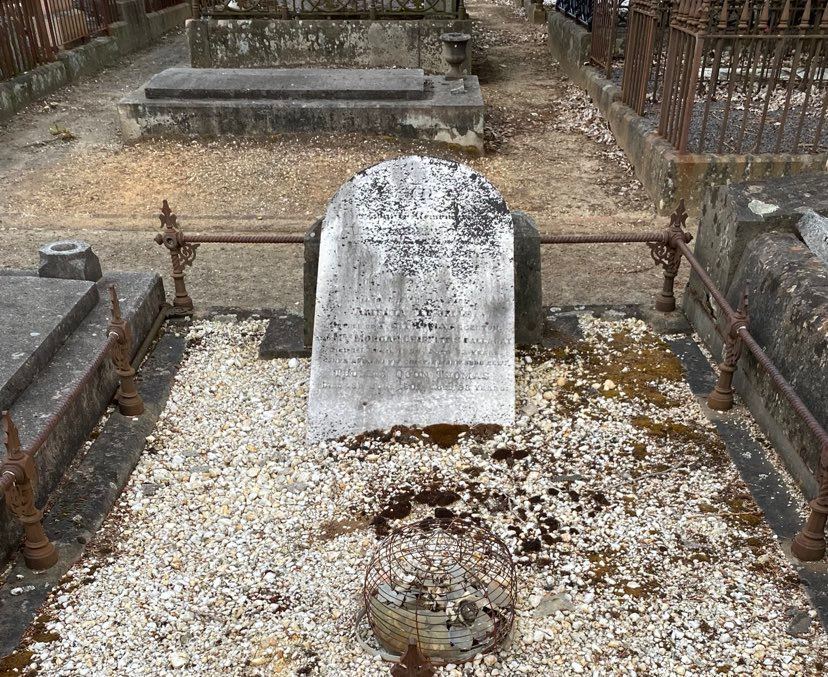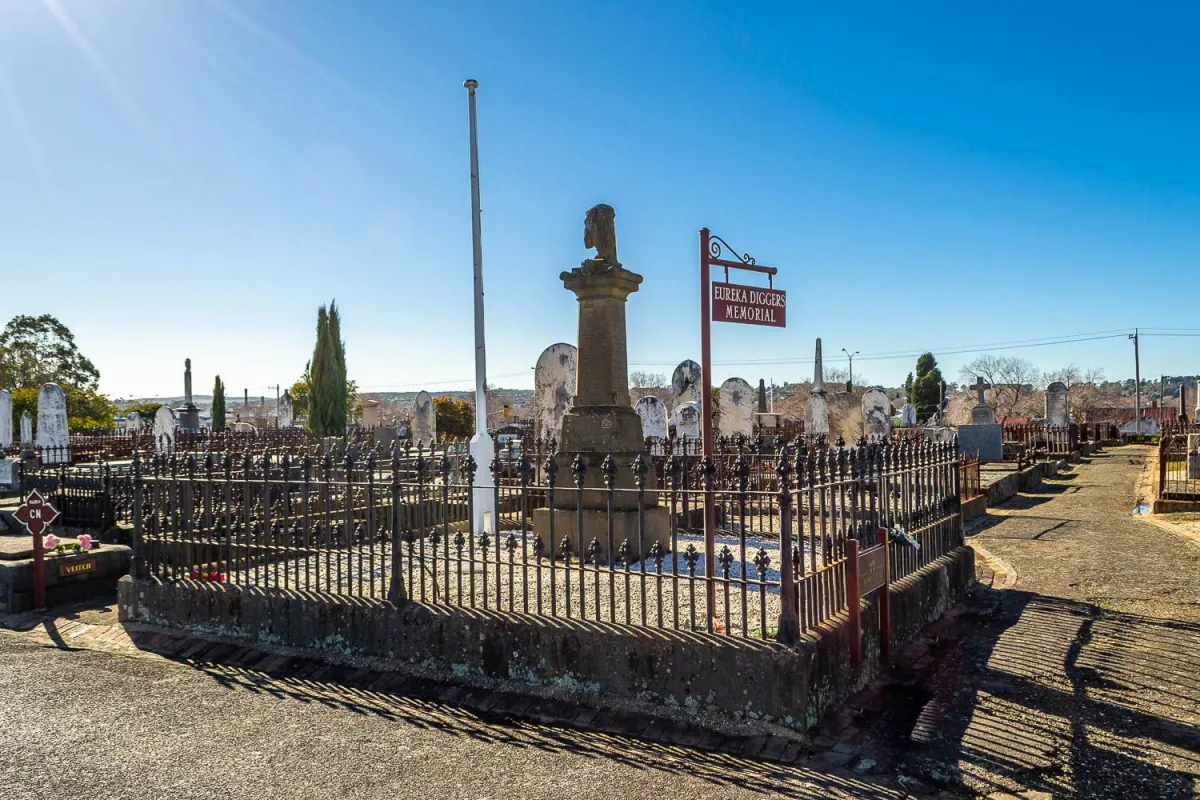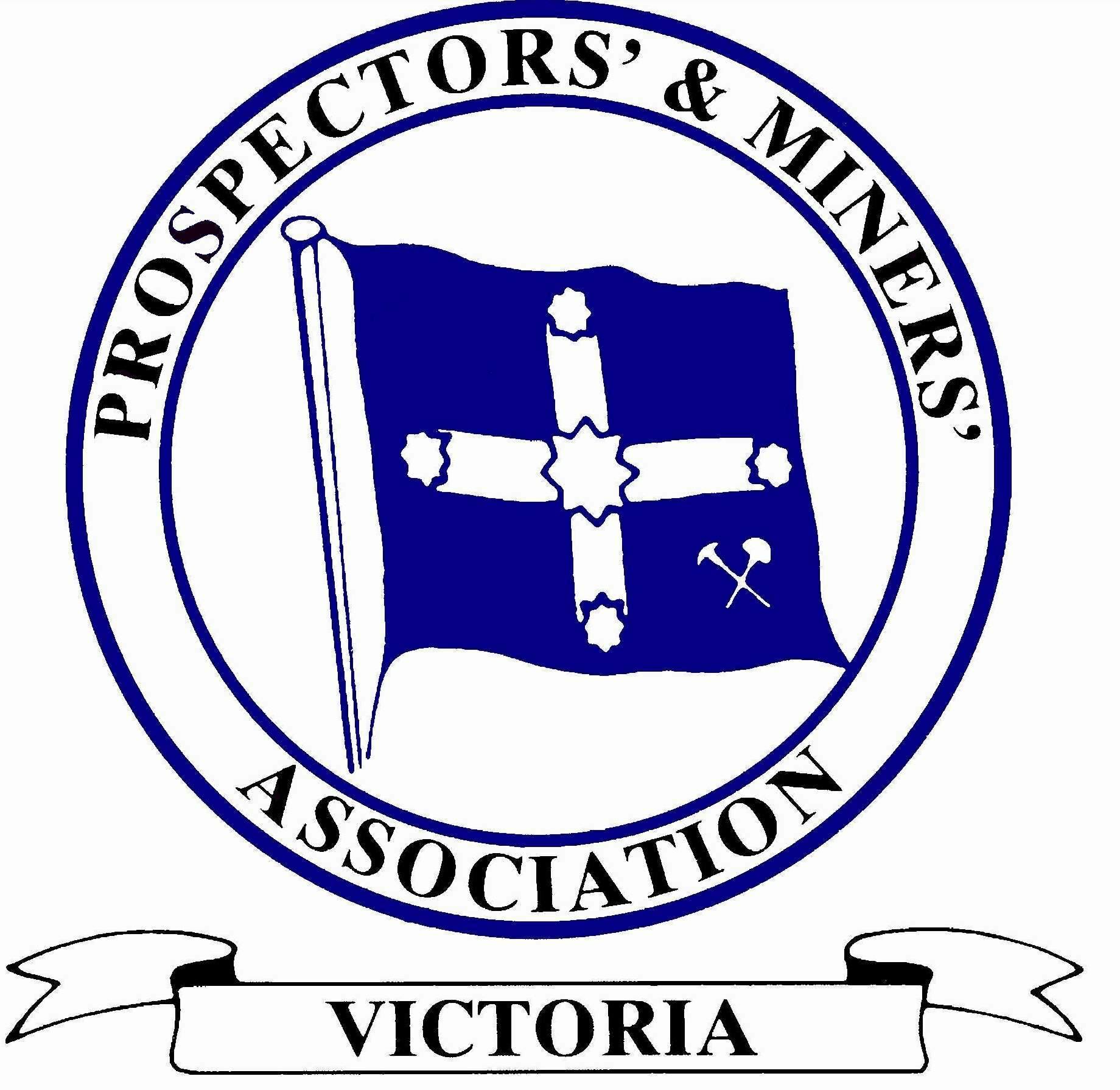
A sensational discovery was made in a grave at the Ballarat Old Cemetery in 1907, where a quartz vein filled with a dazzling display of gold was unearthed while digging the grave of mining investor, Mr. Thomas C. Thomas.

It was considered a remarkable coincidence that gold should be discovered in the final resting place of Mr. Thomas, who was one of the leading mining investors of Ballarat for many years, and he had taken a prominent part in developing the golden resources of the famous Egerton and Berringa districts.
A trial crushing of the cemetery reef was made by Mr. Woolcott, chairman of the Ballarat Stock Exchange, who put a three and a half hundredweight sample through the battery of the Ballarat School of Mines, for a yield of 6 pennyweight of course gold, a fine average of one and three quarter oz per ton.
Mr. Woolcott exhibited the gold obtained, and experts pronounced it to be a splendid sample!

The grave of mining investor Thomas C. Thomas, where the gold was discovered.
Several other marvelous specimens from the grave were also on view in the office of Mr. Kirton, Member for Ballarat West, and the foreman of the cemetery also had several rich samples of the stone in his possession.
More gold was soon unearthed in another grave about 70 yards from the first.

The discovery caused quite an excitement in Ballarat, with a wild rush of prospectors quickly pegging out claims for a mile around the cemetery.
Old miners who had worked the alluvial ground in the district many decades earlier had always recommended that prospecting for quartz in the vicinity should be undertaken.
Some small claims were worked for quartz reefs in the early days, with excellent results, but expenses and water caused many to abandon their mines. Many of these old miners predicted that this new rush would no doubt meet with more water than gold.
So this quickly appeared to be a tricky spot to work, for more reasons than the fact that the reef was located directly within the cemetery.

Endeavours were being made to arrange with various property owners for the right to mine under their land, and several old shafts in the vicinity were planned to be utilized in the opening up of what was hoped to be a new field of unfathomable riches.
It was understood that miners could work up from beneath the cemetery up to 200 feet from the surface, but the cemetery trustees allowed a syndicate to explore within the cemetery itself.
The Mayor was watching the early development of this new field with great interest, as he had attempted to put together a Prospecting Association for the area a few years earlier, but there were not enough shares taken up by the public for the project to move ahead.
Meetings were held to discuss the possibility of re-establishing this association in the hopes of a strong company being formed. It was decided that if the mining was all undertaken by private enterprise, then that would an excellent outcome.
But if the lease holders dropped or shepherded their claims, the Mayor would call another meeting and they could decide upon a course of action to ensure that the land was properly prospected and worked, for the prosperity of the town.
This discovery had ignited a great deal of hope, with many excited at the prospect of the old glory of Ballarat being revived.

Centenary of Gold Monument, Ballarat VIC
With the permission of the cemetery trustees, a shaft was sunk to a depth of 25 feet by a local syndicate. Eight tons of stone was taken and crushed at the School of Mines.
There must have been much suspense while waiting for the results of this crushing, which could determine the future course of this new and hopeful field!
But to the surprise of many, this crushing yielded a return of only two pennyweights per ton! The rich stone which had been uncovered in the graves appeared to have been a shockingly misleading representation of the field.

A meeting was held to consider future operations of this syndicate, where it was unanimously expressed that the prospects did not warrant further expenditure. Operations ceased, and many thanks were given to the cemetery trustees for granting the opportunity to test the reef.
Although this discovery appeared to be quite singular, it was actually not the first time gold had been discovered in this very cemetery through the digging of a grave.
More than two decades earlier, rich gold bearing stone was found during the sinking of the grave of the late Reverend, Father Sheridan, who was killed by a fall from a horse in the Buninyong district while on his way to administer the sacraments of the church to a dying man.
The ore in Father Sheridan's grave carried coarse pieces about the size of a pea, and several of the parishioners purchased them at prices considerably above their value for the purpose of forming them into watch chains and necklace pendants as mementos of the ill-fated young priest.
With the Ballarat Old Cemetery being established so early in such a rich gold field, it is hardly surprising that gold would occasionally be met with in the sinking of graves.

Visitors to Ballarat's Old Cemetery today can take an educational stroll through the beautifully maintained grounds, and learn some of the area's fascinating history through a series of displays, walks and memorials.
Notable features of the cemetery include the Eureka memorials, the beautifully restored 1890's rotunda, the Anzac Heritage walking trail, a Chinese section with funerary oven and altar, an indoor information center with detailed displays, and a touch-screen computer for burial record searches.
You can even take a guided tour through the cemetery at night!

